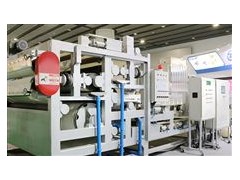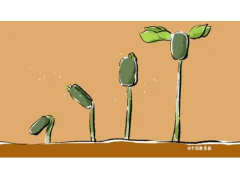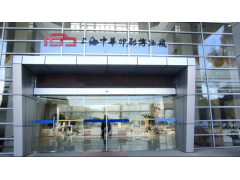“We have sold some major game-changing machines during this time. In addition, modern prepress CTP systems have been supplied to several customers in our market (region). Our main focus now is on the packaging sector. Although the commercial sector is still relevant, we have sold fewer machines in this area given the recent difficult market conditions. The above statement from Godwin Ojilo, Managing Director/CEO of Heidelberg Nigeria Limited seems to be the current state of the printing industry in Nigeria and the entire West African sub-region since the last drupa 2016 till now.
According to Godwin Ojilo, market conditions that make doing business in the West African printing and related markets challenging include but are not limited to: Finding foreign exchange (FOREX) is almost impossible, with exchange rates very high and volatile; Market uncertainty, with unpredictable future demand making clients reluctant to invest in new machinery; High interest rates and difficulty in financing client projects; Government bureaucracy, changes and inconsistencies in government policies such as multiple taxations, etc.; Unpredictable business environment and lack of attention to infrastructure such as electricity, roads, shipping, flights, etc.
For Felcal International CEO Felix Oshayi, who supplies CTP and consumables, rapid technological advancement is another determining factor for industry players as most are unable to keep up with the latest trends. However, these apparent challenges in the industry seem to be child’s play for some insightful individuals and institutions who dare to rise to the occasion and make a positive impact in the West African sub-region.
Even before drupa 2016, countries like Nigeria were flooded with brand new, state-of-the-art printing machines like Komori’s Lithrone 429, which embodies high quality and performance in a compact design, the perfect answer for today’s opportunities. According to Bancod/Pressfix, Komori’s authorized representative in Nigeria, one of these is Digital Reality Print in Lagos, Nigeria, owned by Florence Alakija, the richest woman in Africa, who apparently bought an updated version, the Lithrone GL 540 with coating unit, in 2014 to meet the extreme demands of its customers while responsibly taking care of the environment.
Soon after the female-led print shop took the bold step, other savvy print investors in Nigeria made similar moves such as Printserve in Lagos, which installed another brand new Lithrone GL 540 in 2019, and more recently Marvelous Mike Press in Abuja, the Federal Capital Territory, which installed the latest Lithrone GL 429 with dual coating capabilities earlier this year, embedded with Komori’s ultra-short makeready and smart color features to reduce wasted makeready time.
But what influences these investors' purchasing decisions? Augillo advises, "We understand that there are multiple factors that influence our customers' purchasing decisions, but the primary factor that influences our customers and the industry specific to our market (region) is the economy. However, other factors such as product quality, reliability, price, brand image, unique features and of course service and fast and reasonably priced spare parts availability also influence our customers' purchasing decisions."
As a result, his company has sold and installed some major game-changing machines in Nigeria such as the Heidelberg Speedmaster XL 106-8+LYYL, Heidelberg Speedmaster CX 104-5+L, among others, besides supplying modern pre-press CTP systems to government agencies in the region such as the Lagos State Printing Corporation owned by the Lagos State Government,
Being a region with many economic challenges, most printing investors have opted for second-hand/refurbished presses to upgrade their service offerings. These second-hand but fully functional presses were purchased and installed after the last drupa in 2016 and can be seen all over Nigeria.
Elsewhere, used Komori Lithrone models are running well at Abeysteph Press, View Point LTD, Rashemed Publications, etc. Other companies are also running refurbished Komori presses successfully.
In the prepress sector, quite a few CTP brands such as Kodak, Eastcom, Screen, etc. are also installed and operating in the West African sub-region, but mainly in Nigeria because of the market size and economy. These CTP systems are sought after for their brand, quality, durability and price. The publishing, packaging and label/gravure sectors have also witnessed the installation of many new presses.
Bhojraj Industries LTD is leading the way in high-quality gravure printing in Nigeria with a significant investment in BOBST technology in 2020. The Lagos-based supplier of flexible packaging to the food industry is expanding its production capacity for high-quality printed packaging with the addition of a NOVA RS 5003 gravure press.
Then in 2022, Tripple Gee and Company, one of Africa’s fastest growing companies, purchased and installed a Nilpeter 11-color flexographic press to consolidate its areas of strength, expand into new markets, and continue to meet customer needs while providing shareholders with the greatest return on investment.
Equally important, Flexipack in Agbara, Nigeria, has also invested in a BOBST EXPERT K5 for metallization. The 2,900mm EXPERT K5 machine started production in early 2023, producing BOPP metallized films for sustainable flexible packaging.
There is no doubt that the West African printing market has changed dramatically over the past decade in line with industry trends. Even in the face of obvious geo-economic challenges, players in the region are increasing their capacities in order to take advantage of the huge investment potential in the region.
Another very important market for Africa is Egypt, which, with a population of 110 million, is one of the largest printing and packaging markets in the region and in Africa as a whole. In addition, Egypt has a long history in printing, dating back to 1798 when Napoleon came to Egypt with three letterpress presses, and even before arriving in Egypt, while his troops were sailing in the Mediterranean, he began printing all the documents needed for his army and for communication with the Egyptian people.
Napoleon took his printing press with him when he left in 1801. about 20 years later, in 1820 (204 years ago), the Egyptian Governor-General, Muhammad Ali Pasha, started Egypt’s first printing company, the Amiriya Printing House, which is still in operation today, covering an area of 35,000 square meters, employing nearly 3,000 people, consuming 20,000 tons of paper per year, and having 54 different printing presses that can print 750,000 B1-size sheets per day.
The first newspaper in Egypt and the Middle East, El Wakae El Masreya, began printing in 1928 under the leadership of its editor Sheikh Mohammed Abdu. The Egyptian Federation of Industries was established in 1922, with a special Printing and Packaging Chamber established in 1969, with 4,415 packaging printers and 2,687 commercial printers as members.
The Egyptian printing industry is dominated by offset printing, with a market share of about 60%, followed by flexo printing, with a market share of about 20%. Gravure and silk screen printing together account for 12% of the market share, while digital printing is about 8%. There are two major uncoated paper mills in Egypt: Kennametal with an annual capacity of 120,000 tons and Edfu with 60,000 tons, accounting for only 35% of the total consumption. The rest is imported. The total amount of offset ink consumed each year is about 8,000 tons, of which sheet-fed offset ink consumption is about 5,000 tons.
Page volumes for the digital printing market size include: 700 million color pages per year; 1.5 billion statements and invoices, and approximately 1.5 billion black and white pages. In addition, an average of approximately 10 million square meters of large format inkjet billboards are printed each year, and in election years, this figure is estimated to be even higher, with some predicting it could reach 11 to 13 million square meters. Packaging is the fastest growing market in Egypt, with an annual growth rate of 20%.
The first printing education program in Egypt was the School of Applied Arts, founded 185 years ago by Muhammad Ali Pasha for the then Egyptian army, and later joined Helwan University in 1975. Today, in its Department of Printing, Publishing and Packaging, more than 330 undergraduates and more than 42 postgraduates are preparing their Masters, Masters and Doctoral degrees. In addition, Egypt is one of the few countries with special vocational printing schools, secondary printing schools, colleges of higher learning, and both government and private universities, all of which teach printing and packaging technology.
Egypt is one of the few countries in the region and the African continent that has its own banknote printing facilities, which are owned by the Central Bank of Egypt and are considered to be one of the first printing houses in the Middle East and Africa, established in 1967 to print Egyptian banknotes locally.
Recently expanded through the introduction of the latest printing production machines and fully automated inspection systems at its two branches in Giza and the New Administrative Capital, the facility has the capacity to produce 5.5 billion banknotes per year, using automated finishing and Banknote Processing System (BPS) machines, on time and in compliance with international quality standards, meeting the volume requirements of the Central Bank of Egypt and various Middle Eastern and African central banks.



